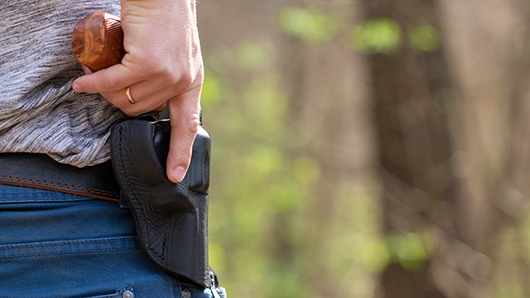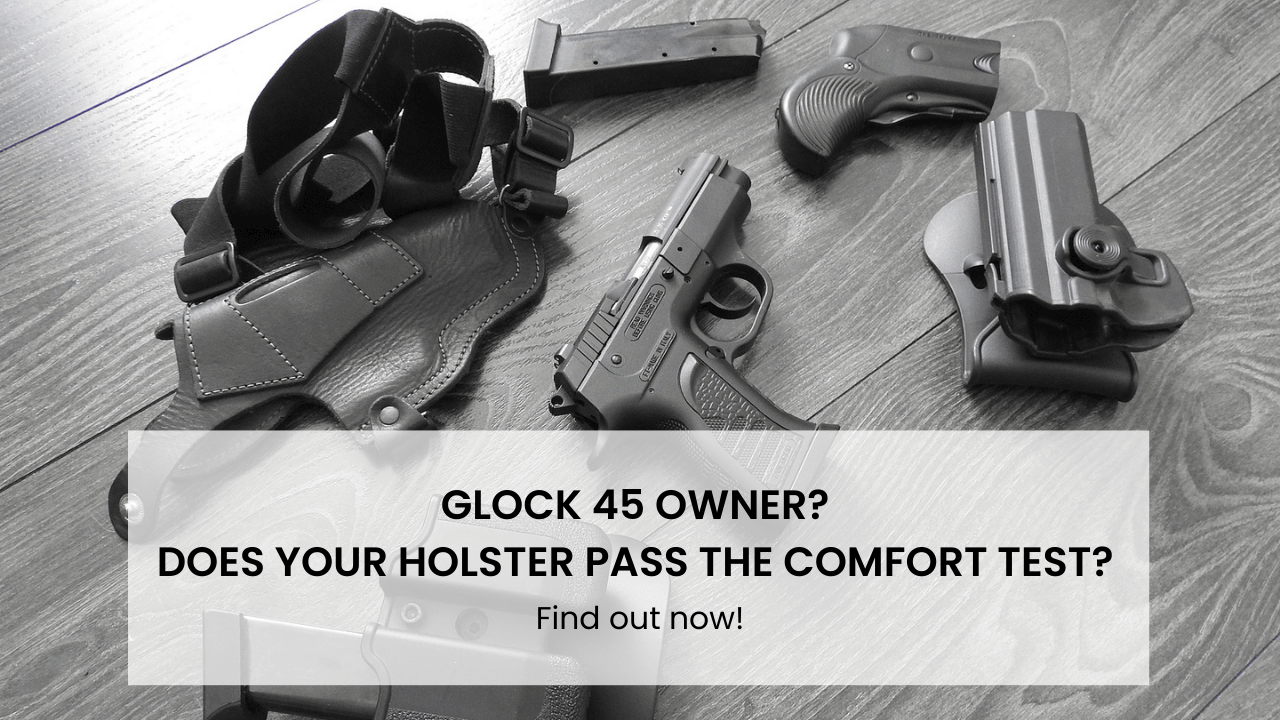Inside the Waistband Holsters: What You Need to Know
Nov 2nd 2020

If you’re interested in carrying a firearm for personal protection, you’ve probably thought about how you’re going to carry it. The most secure and efficient option is a dedicated gun holster — but what kind?
When choosing a holster, some of the elements that may be considered are as follows:
Safety
Ideally, the holster should cover the trigger guard, preventing the trigger from being accidentally depressed during the draw. Avoid holster materials that allow it to enter the trigger guard.
Retention
Holsters with retention mechanisms or that require conscious input from the user to break the pistol free and draw can increase your security when carrying
Concealment
An IWB holster reduces the extent to which your holster and gun print — i.e., where the outline, or silhouette, becomes visible through your clothing.
Comfort
Although softer once broken in, leather may be less comfortable than Kydex during the warmer months. Your body type also determines the right holster type.
OWB Holster
Perhaps the most well-known example is the OWB (outside-the-waistband) or belt holster. Typically worn on the strong side hip, this is what we most often see police officers and soldiers wear when carrying their duty weapons. The OWB holster is principally designed with open carry in mind, although you can cover it with a jacket if necessary. One of the OWB holster’s advantages is that it doesn’t interfere with your pants’ fit because it’s worn outside of the waistband on the gun belt.
IWB Holster
If you’re looking for a more concealable holster, the IWB holster is an excellent choice. This type of holster is designed to be worn between your waistband and your body. It offers the most versatility, allowing you to adjust the holster’s position on the gun belt according to your individual preferences. As the holster takes up space inside the waistband, you may have to wear a pants size up.
Carry Positions
When we speak of carry positions, we tend to refer to the hour hand’s position on an analog clock face. Your belly button is at 12 o’clock, and the small of your back is at 6 o’clock.
When carrying a gun, your strong side is the side of your body that corresponds to your dominant, or shooting, hand. For example, if you’re right-handed, your strong side would be your right hip. Your right hip is at the 3 o’clock position on the clock face — your left hip is 9 o’clock.
- Appendix carry — often positioned at 1 or 11 o’clock, depending on whether you’re right- or left-handed, but can also be at 10 or 2. One of the most accessible carry positions, the practicality of appendix carry depends on your body type.
Although not a safety hazard when carried in the correct type of holster, some people find the muzzle’s direction is pointed in unsettling — the groin and femoral artery. Whether this is a concern is up to you. - Strong side — this is probably the most common position. Comfortable for most body types and easily accessible, it can be hard to reach when seated and may necessitate that you cant your body to the opposite side. It may also require the sweeping away of clothing, both on the draw and when reholstering.
- Cross draw — similar to appendix carry, cross draw positions the gun on the weak side with the grip facing your strong side. More comfortable to wear while sitting, the muzzle is also typically pointed away from your body.
- Small of the back — can be highly concealable, as the gun is laid flat against the arch, and is especially comfortable standing. Unfortunately, when sitting, the gun is pressed against your spine, so this position may not be the most comfortable when driving. Some people also express concern about the gun being pressed against their back if they suffer a fall.
When choosing a holster, Incognito Concealment offers both IWB and OWB holsters to accommodate a range of diverse needs.

Holster Materials
Most holsters are made from three materials: Kydex, or another type of thermoformed plastic; leather, the old-fashioned stand by; and ballistic nylon, the least expensive option. Kydex’s advantages are that it’s rigid; it doesn’t absorb water, swell, or warp; and the Kydex shell can be formed, by heat, to mold to the particular contours of your gun.
Leather can also mold, in a sense, to the gun, and your body, as it breaks in over time, forming an almost custom fit. Leather, however, is also more susceptible to absorbing moisture. If the leather is not stiff, it can also interfere with reholstering as the mouth deforms in response to pressure.
Final Thoughts
At Incognito Concealment, we understand the struggles associated with selecting the right holster for concealed carry. As a result, we offer holsters to suit a variety of handguns and carry styles. Call us at (586) 333-4240, and we’ll answer any questions you may have regarding IWB, OWB, and paddle holsters, so you can be sure you’ve made the right choice.











